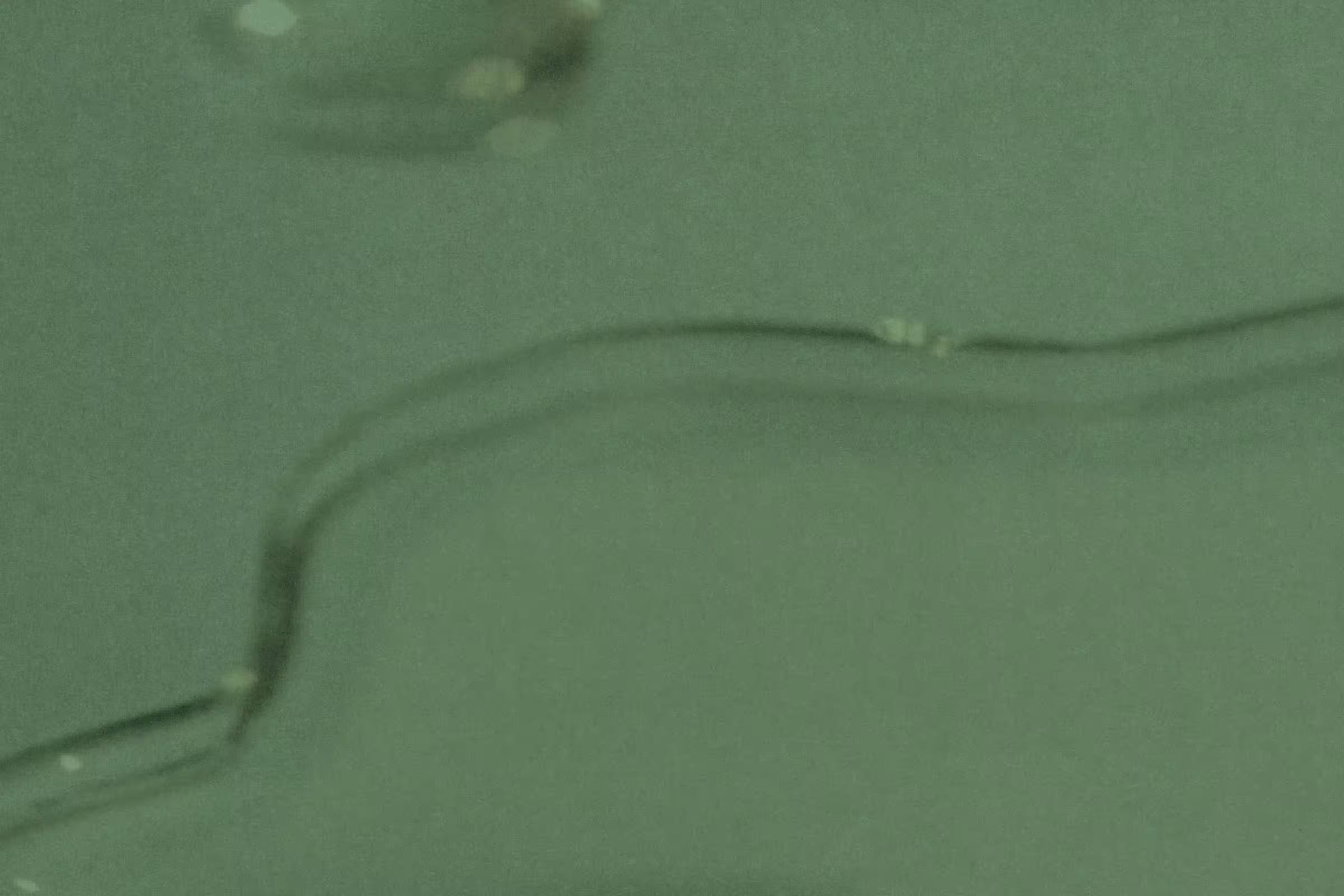

Luteal Phase Discharge: What Color, Texture, and Symptoms Reveal
Discover what luteal phase discharge color, texture, and symptoms can reveal about your cycle, hormones, and when to talk to your doctor.
Words by Olivia Cassano
Scientifically edited by Dr. Krystal Thomas-White, PhD
Medically reviewed by Dr. Sameena Rahman, MD
Have you ever noticed that your vaginal discharge looks different right before your period? That’s just one of the many changes you might notice during the luteal phase of your menstrual cycle.
The luteal phase occurs after ovulation and before the start of your next period, typically lasting around 14 days. During this phase, the hormone progesterone increases, preparing the lining of the uterus for a potential pregnancy. This hormonal shift influences the nature of vaginal discharge, but it’s nothing to worry about.
Keep reading to learn more about luteal phase discharge, what’s normal, and when to see your healthcare provider.
What is vaginal discharge?
Vaginal discharge is a fluid produced by glands inside the vagina and cervix that helps keep the vagina healthy, clean, and lubricated, and to protect it from infections. Normal vaginal discharge can range from clear to milky white and can be thin or thick. It usually has a mild odor that ranges from tangy to earthy or "musky".
The consistency, quantity, and color of vaginal discharge change throughout your cycle in response to hormone levels. It follows a fairly predictable pattern, and the cyclical changes in its appearance and feel can help you determine which phase of your menstrual cycle you’re in.
It's worth noting that you might not notice any cyclical changes in your vaginal discharge if you're on hormonal birth control. The synthetic hormones in some forms of birth control (such as birth control pills) can alter the natural fluctuations of estrogen and progesterone, which means you may experience different patterns of discharge.
What is the luteal phase?
To understand what luteal phase discharge looks like, it’s helpful to first have a basic understanding of the menstrual cycle: The menstrual cycle is split into four phases:
- Menstruation: The menstrual phase is when your uterine lining (endometrium) sheds, AKA your period. It starts on the first day of your period. You probably won't notice any discharge during your period because of menstrual blood.
- Follicular phase: The follicular phase also starts on the first day of your period — confusing, we know — and lasts until ovulation. During this phase, the body produces follicle-stimulating hormone (FSH), which makes the ovaries develop follicles, each containing an egg, and leads to the thickening of the endometrium in preparation for pregnancy. Your vaginal discharge might be white, cloudy, or sticky during this phase.
- Ovulation: Your ovary releases the egg. This phase only lasts about 24 hours (part of what is known as the "fertile window"). You might experience more discharge around this time of your monthly cycle, and it may look clear and slippery, like egg whites.
- Luteal phase: The final phase of the menstrual cycle starts when an egg begins its journey to your uterus and ends when you get your period (around two weeks). If the egg is fertilized by sperm, it attaches to the endometrium, and pregnancy begins. If fertilization doesn't happen, you'll get your period, and the whole cycle starts over.
Common symptoms during the luteal phase
During the luteal phase, many people experience a variety of symptoms due to hormonal changes, particularly the rise in progesterone. Common symptoms include breast tenderness, bloating, fatigue, and mood swings. Some people may also experience mild cramping or lower back pain, as well as changes in appetite and sleep patterns. These symptoms are part of the body's natural preparation for a potential pregnancy, but they can vary widely from person to person.
Discharge in the luteal phase: what to expect
At the end of your cycle, the progesterone hormone peaks to support a pregnancy. Higher levels of progesterone also cause your cervical mucus to thicken.
You might notice a pretty noticeable change in the quantity and texture of your vaginal discharge. You may not even notice any discharge at all.
Generally, vaginal discharge has the following characteristics during the luteal phase:
- Texture and consistency: Vaginal discharge tends to become thicker and creamier. This is a noticeable change from the clear, stretchy, and egg-white-like consistency of discharge that often occurs around ovulation. The increased progesterone cause the cervical mucus to thicken, which can result in discharge that is more opaque and viscous.
- Color: Luteal phase discharge is typically white or off-white. It may also have a slightly yellow tinge. This is in contrast to the clear or slightly cloudy discharge seen during the follicular phase and around ovulation. Right before your period, you might also notice brown discharge — this is due to the presence of blood, and generally a sign that your period is about to start.
- Quantity: The amount of discharge during the luteal phase can vary from person to person. Some may notice that their vaginal discharge increases, while others may experience less.

Recurrent symptoms? Get Evvy's at-home vaginal microbiome test, designed by leading OB-GYNs.
What discharge color means
Healthy vaginal discharge can vary from clear to white, but some changes can signal an underlying issue:
- Creamy white discharge may appear before your period and is usually harmless unless accompanied by itching or irritation, which could indicate a yeast infection.
- Green or yellow discharge, especially if thick, frothy, or foul-smelling, may suggest an infection like trichomoniasis or gonorrhea.
- Gray discharge with a fishy odor is often a sign of bacterial vaginosis (BV).
- Brown or bloody discharge can happen just before or after your period, but it should be checked out if it occurs frequently or outside of your normal cycle.
What discharge texture means
The texture of your vaginal discharge can offer helpful clues about where you are in your cycle and whether your vaginal microbiome is in balance. While variations are normal, certain textures may also signal an infection or imbalance that needs attention.
- Thin, watery discharge is often perfectly normal, but can be a sign of BV if it has a fishy or foul smell.
- Stretchy, egg-white-like discharge is also a healthy sign of ovulation.
- Creamy or lotion-like discharge is common before your period and is typically harmless unless it’s accompanied by irritation or odor.
- Thick, white, and clumpy discharge — especially if it resembles cottage cheese — can be a symptom of a yeast infection or a sexually transmitted infection (STI) such as chlamydia, particularly when paired with itching or burning.
- Frothy discharge may be a sign of trichomoniasis, another common STI.
- Sticky or tacky discharge might occur at various points in your cycle, but it isn't usually a cause for concern on its own.
Discharge throughout your cycle
Vaginal discharge changes naturally throughout your cycle in response to hormonal fluctuations. These changes are not only normal; they're actually helpful, especially when you're trying to track fertility or better understand your body’s signals. Here’s what to expect during each phase of your cycle:
- Menstrual phase: Bleeding begins, and vaginal discharge is masked by menstrual flow.
- Follicular phase: As your period ends and estrogen levels begin to rise, you may notice a small amount of sticky or creamy discharge. This is typically white or pale in color and has a thicker consistency.
- Ovulation: Just before and during ovulation, your body produces more cervical mucus, and discharge becomes clear, stretchy, and slippery (a bit like raw egg whites). This texture helps sperm travel more easily through the cervix, making it a sign of peak fertility. If you’re trying to conceive, this is the most fertile time in your cycle.
- Luteal phase: After ovulation, progesterone increases, and discharge tends to become thicker, cloudier, and less abundant. It might be creamy or slightly tacky. As you approach your period, discharge may dry up or become minimal.
When to see a healthcare provider
Vaginal discharge is a perfectly normal (and healthy!) bodily function, and it’s normal for the color, consistency, and quantity to change throughout your menstrual cycle. That said, different infections can affect normal vaginal discharge. Any sudden and unusual change to your vaginal discharge could be a sign of bacterial vaginosis, a yeast infection, or a sexually transmitted infection.
Types of abnormal discharge to look out for include:
- Green, frothy, and foul-smelling vaginal discharge
- Gray, watery discharge that has a fishy smell
- Thick white discharge that looks like cottage cheese
- Other vaginal symptoms like itching and irritation.
Any of these signs could indicate a shift in the natural balance in your vaginal microbiome. Paying attention to the changes in your vaginal discharge throughout your menstrual cycle can provide valuable insights into your vaginal health.
Keeping track of the color, consistency, and amount of discharge can help you better understand your body’s natural rhythms and identify any irregularities early on.
FAQ
What does discharge look like in the luteal phase?
During the luteal phase, which occurs after ovulation and before your next period, vaginal discharge typically becomes thicker and creamier due to increased progesterone. The consistency often changes from the clear, stretchy, egg-white-like discharge seen during ovulation to a more opaque and viscous form. The color is usually white or off-white, and while the quantity can vary, the thicker consistency often makes it less noticeable. These changes are part of the body's natural process to prepare the uterus for pregnancy.
What kind of discharge is before your period?
Vaginal discharge before your period typically becomes thicker and creamier due to the increase in progesterone. The discharge is often white or off-white and can be more opaque compared to the clear, stretchy discharge seen around ovulation. Some women may notice that the quantity of discharge increases slightly, while others may find it less noticeable because of its thicker consistency. These changes are normal and part of the body’s natural cycle in preparing for menstruation.
What kind of discharge do you get after ovulation if you are not pregnant?
After ovulation, if you're not pregnant, your vaginal discharge usually becomes thicker, less noticeable, and drier compared to the clear, stretchy discharge that appears around ovulation. This shift happens due to rising levels of progesterone during the luteal phase of your cycle. The discharge at this stage is often white or creamy and may feel lotion-like or slightly sticky in texture. For some people, it becomes so minimal that it might seem like it disappears altogether. This is completely normal and simply reflects your body preparing for menstruation.
Do you have discharge in the luteal phase if pregnant?
Yes, it's totally possible to notice some changes in your discharge during the luteal phase if you're pregnant. In fact, for many people, increased discharge can be an early sign of pregnancy. After you ovulate, your progesterone levels stay elevated whether or not you conceive. But if you do get pregnant, progesterone stays high to help support the early stages of your pregnancy, which can change your vaginal discharge a bit. In early pregnancy, you might find that your discharge becomes more noticeable, often creamy, white, or off-white, and thicker than what you usually experience. Some people even say it feels more abundant than their usual pre-period discharge. This change is all thanks to hormonal shifts and increased blood flow to the vaginal area as your body gets ready for pregnancy. Just remember, while changes in your discharge can give you a hint about early pregnancy, they’re not a guaranteed sign. If you think you might be pregnant, the best way to find out for sure is with a pregnancy test.





